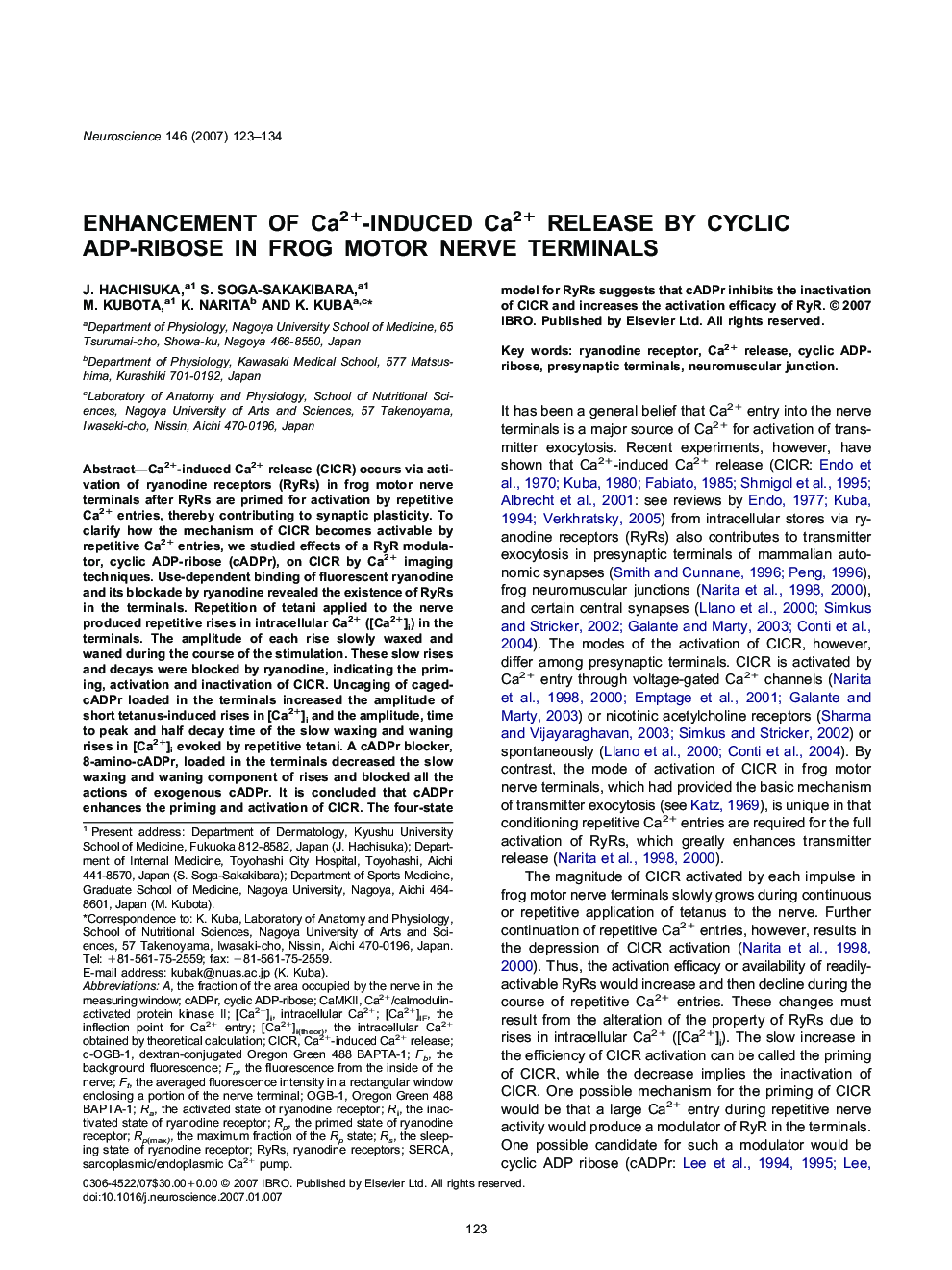| Article ID | Journal | Published Year | Pages | File Type |
|---|---|---|---|---|
| 4340976 | Neuroscience | 2007 | 12 Pages |
Ca2+-induced Ca2+ release (CICR) occurs via activation of ryanodine receptors (RyRs) in frog motor nerve terminals after RyRs are primed for activation by repetitive Ca2+ entries, thereby contributing to synaptic plasticity. To clarify how the mechanism of CICR becomes activable by repetitive Ca2+ entries, we studied effects of a RyR modulator, cyclic ADP-ribose (cADPr), on CICR by Ca2+ imaging techniques. Use-dependent binding of fluorescent ryanodine and its blockade by ryanodine revealed the existence of RyRs in the terminals. Repetition of tetani applied to the nerve produced repetitive rises in intracellular Ca2+ ([Ca2+]i) in the terminals. The amplitude of each rise slowly waxed and waned during the course of the stimulation. These slow rises and decays were blocked by ryanodine, indicating the priming, activation and inactivation of CICR. Uncaging of caged-cADPr loaded in the terminals increased the amplitude of short tetanus-induced rises in [Ca2+]i and the amplitude, time to peak and half decay time of the slow waxing and waning rises in [Ca2+]i evoked by repetitive tetani. A cADPr blocker, 8-amino-cADPr, loaded in the terminals decreased the slow waxing and waning component of rises and blocked all the actions of exogenous cADPr. It is concluded that cADPr enhances the priming and activation of CICR. The four-state model for RyRs suggests that cADPr inhibits the inactivation of CICR and increases the activation efficacy of RyR.
